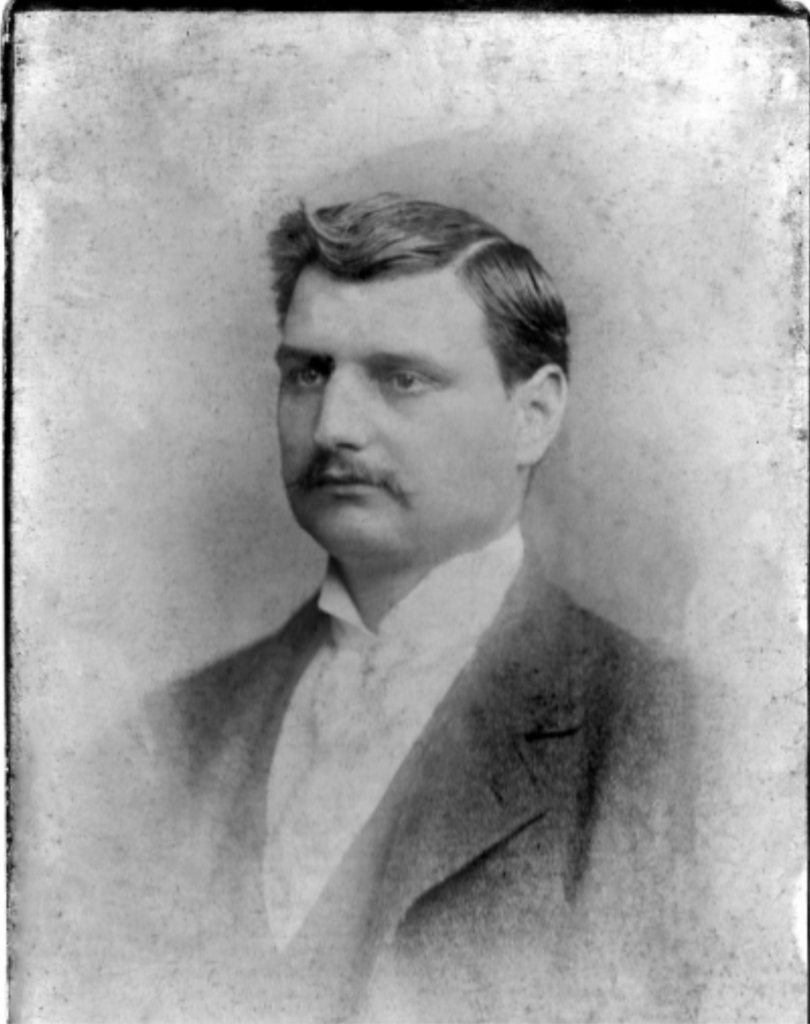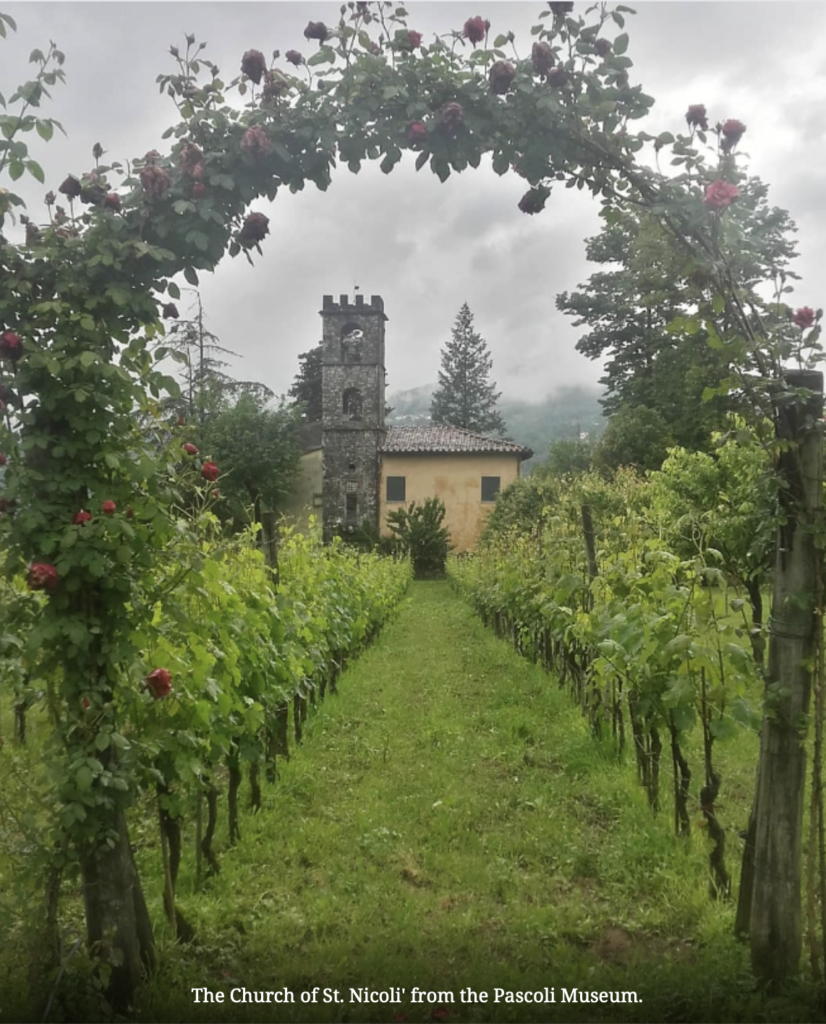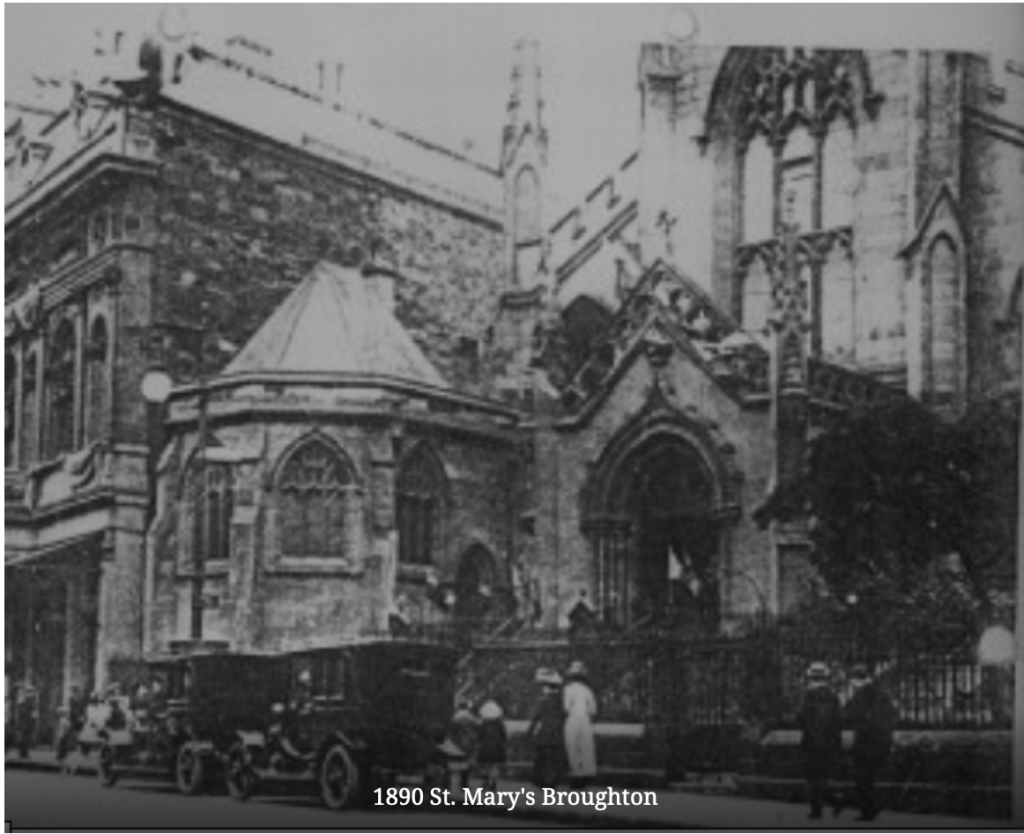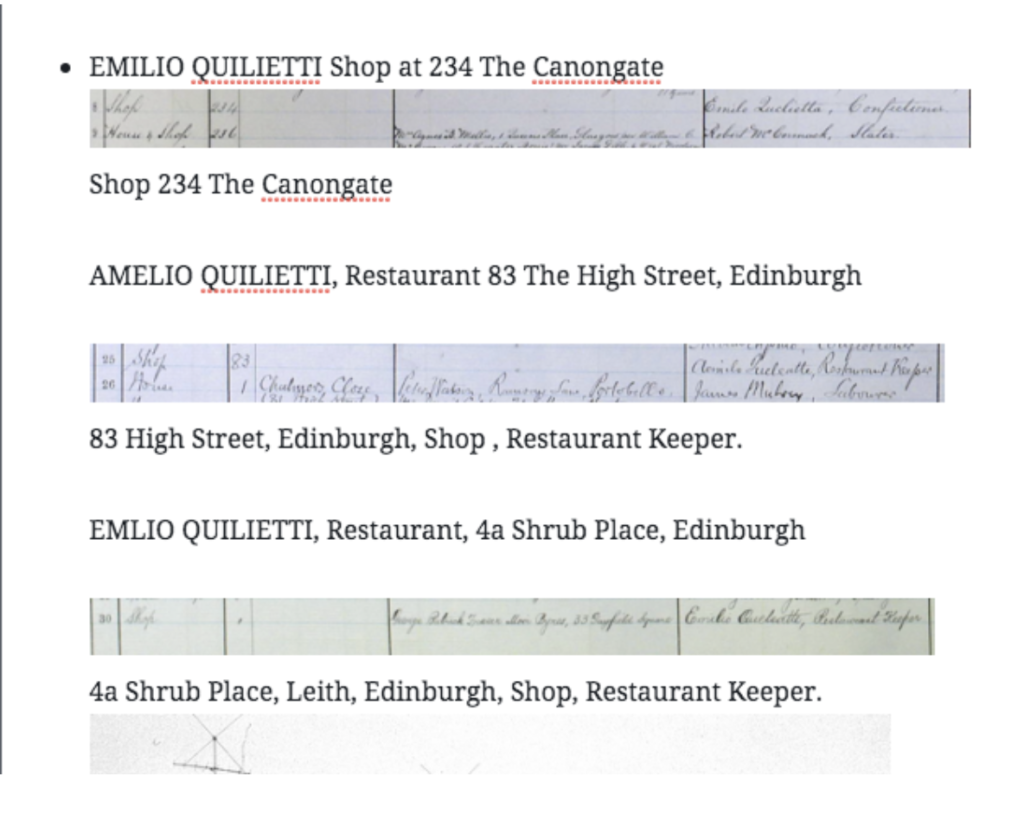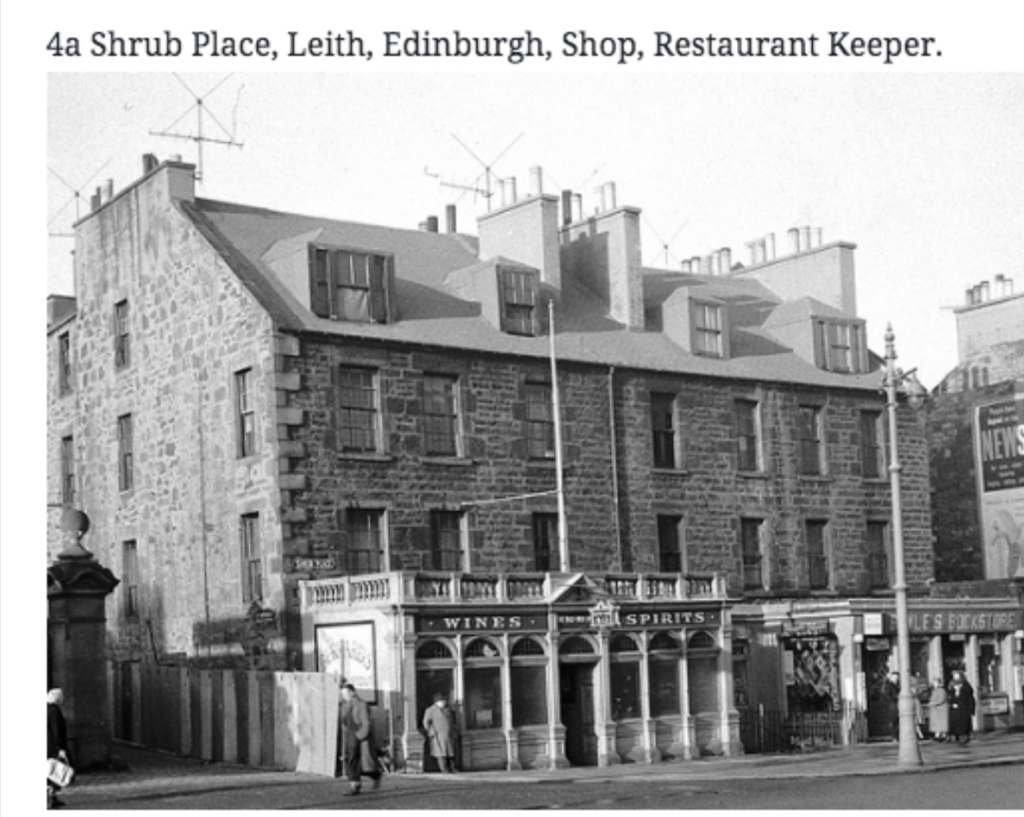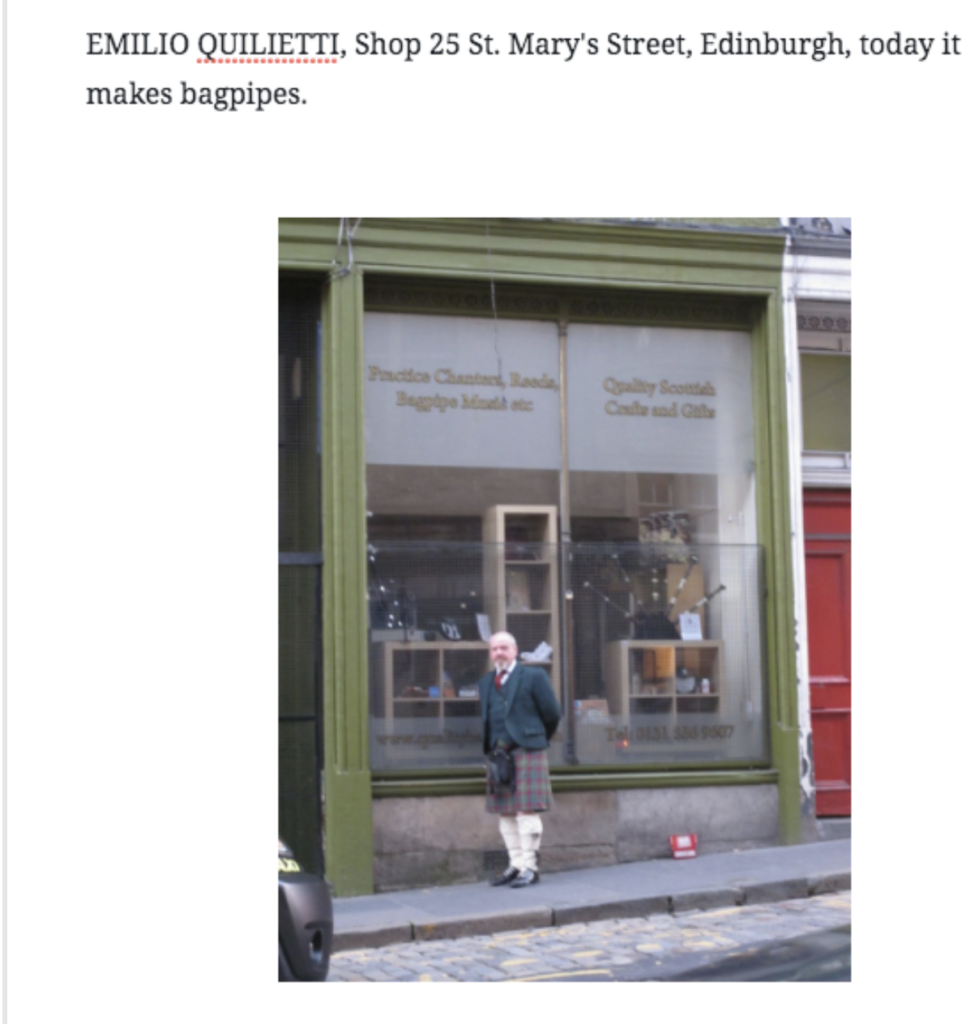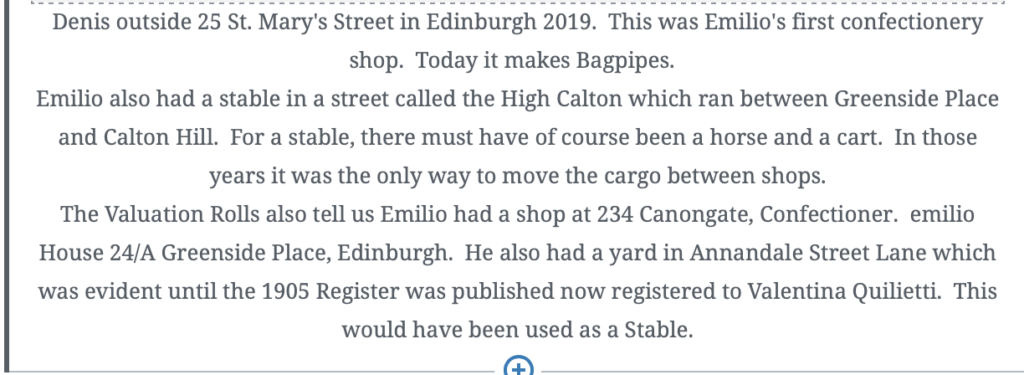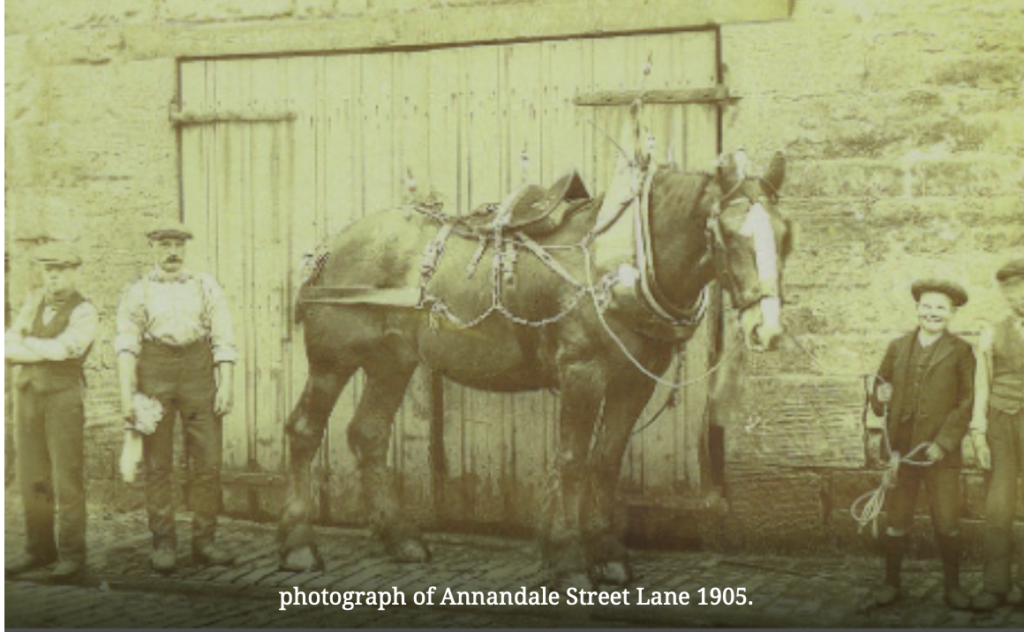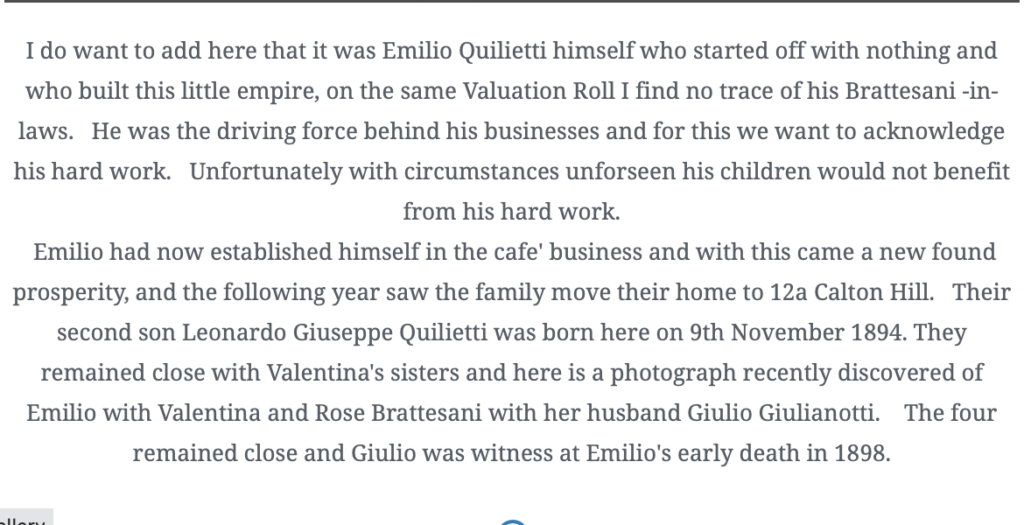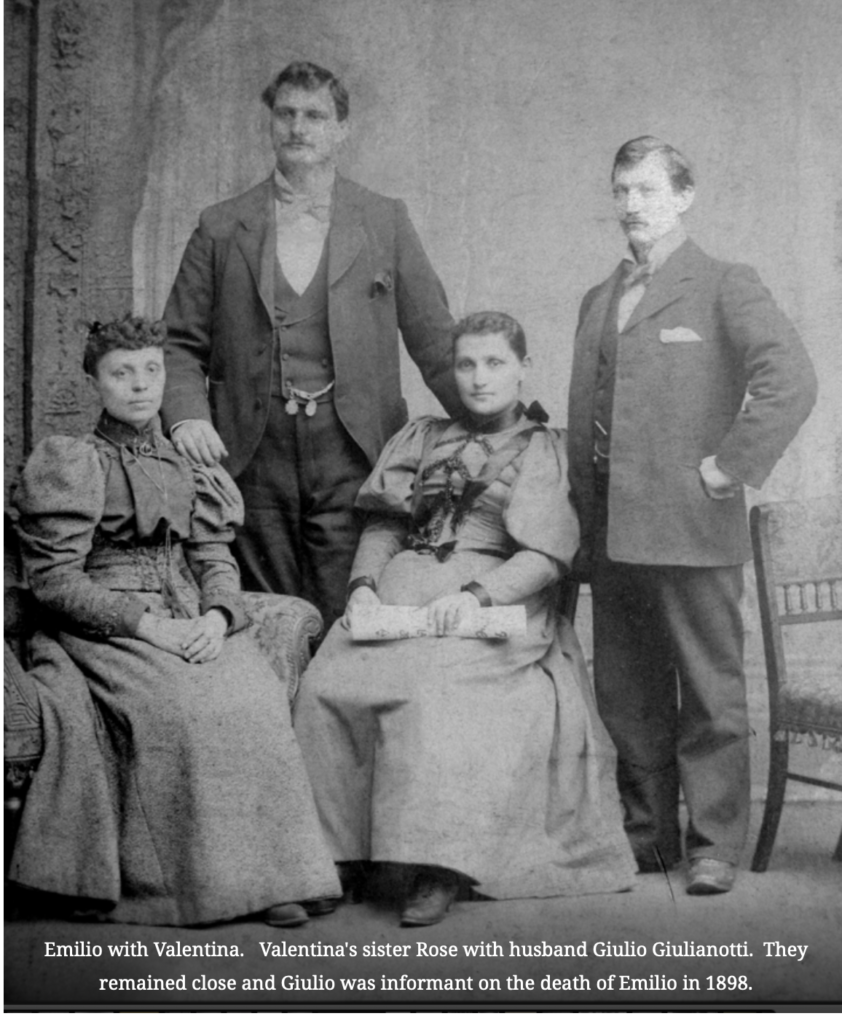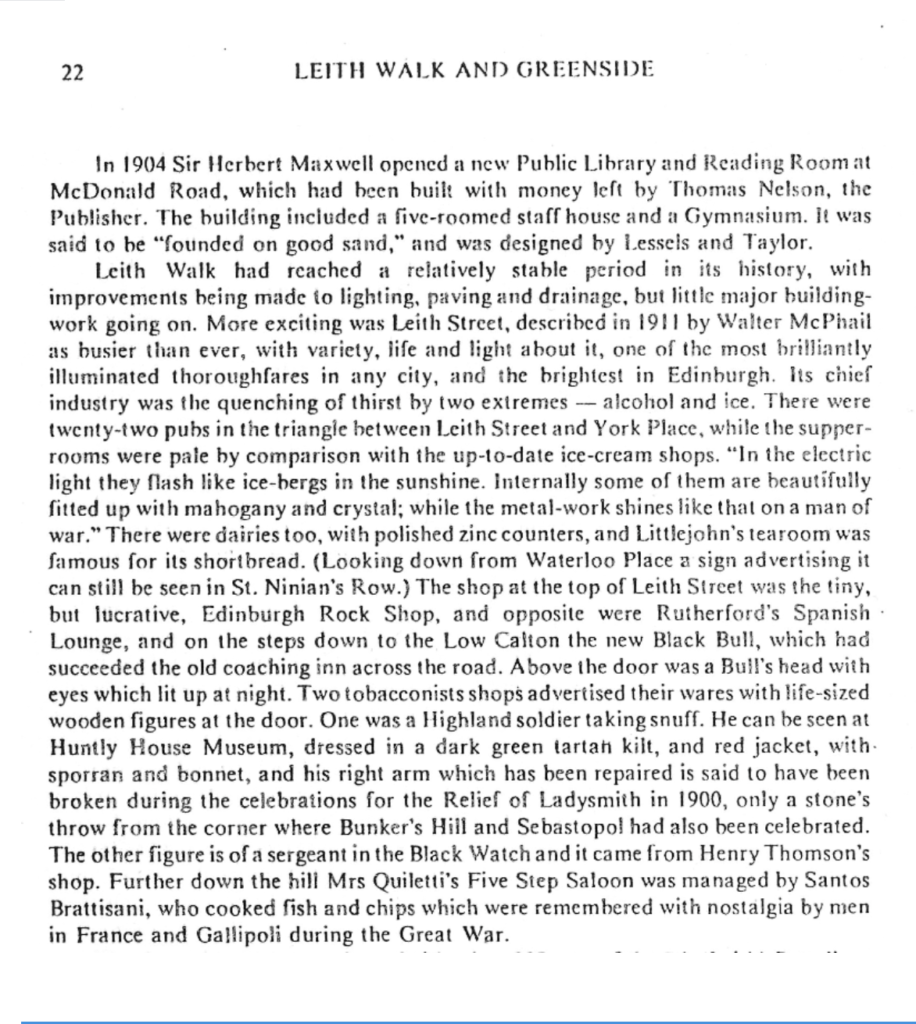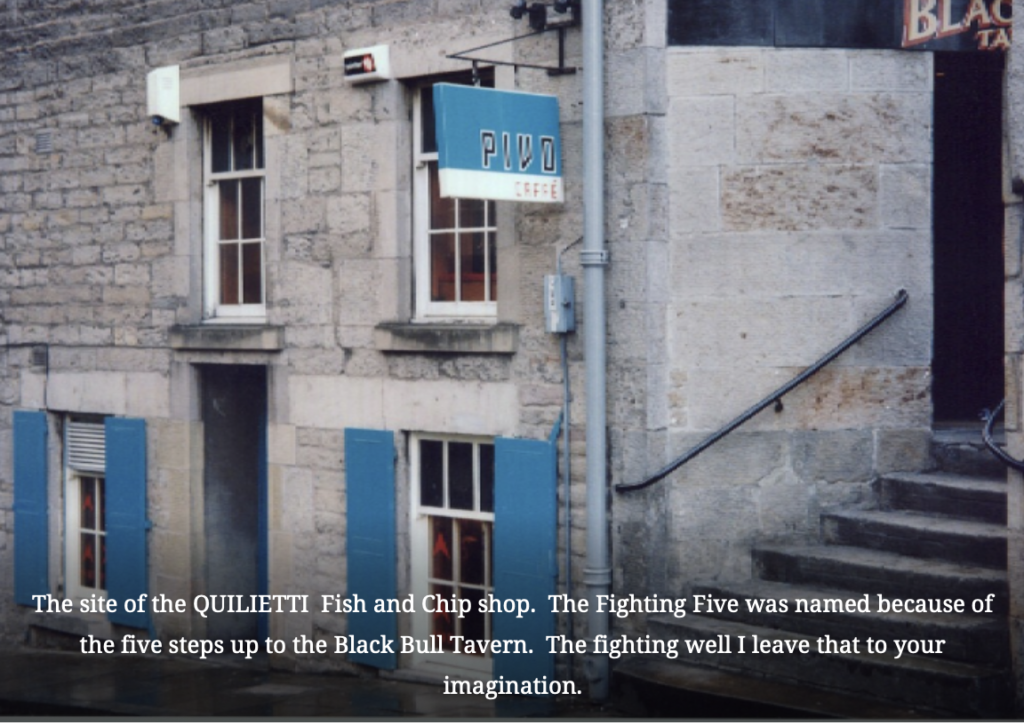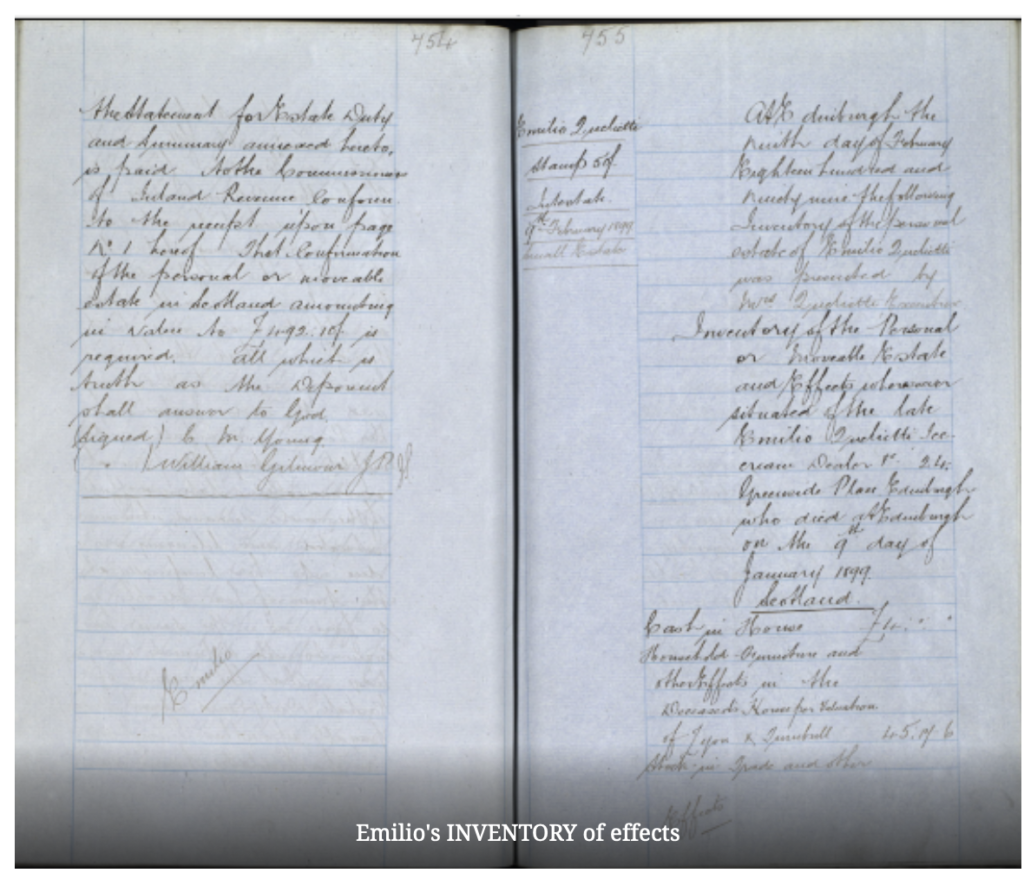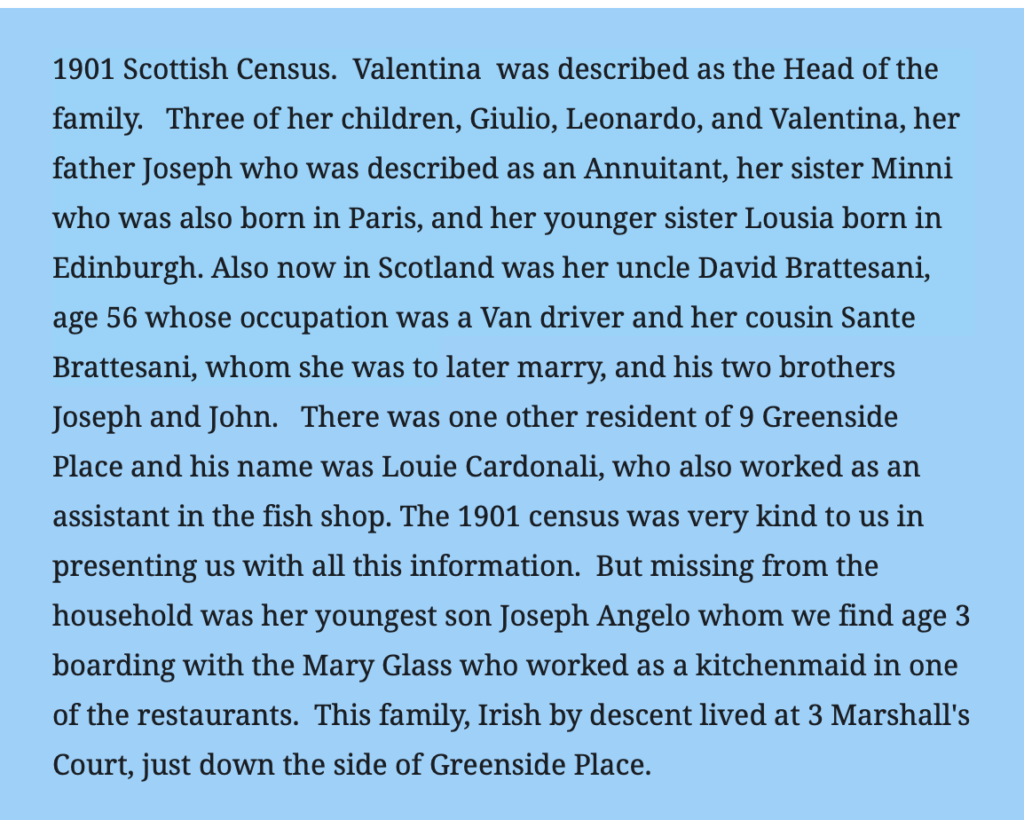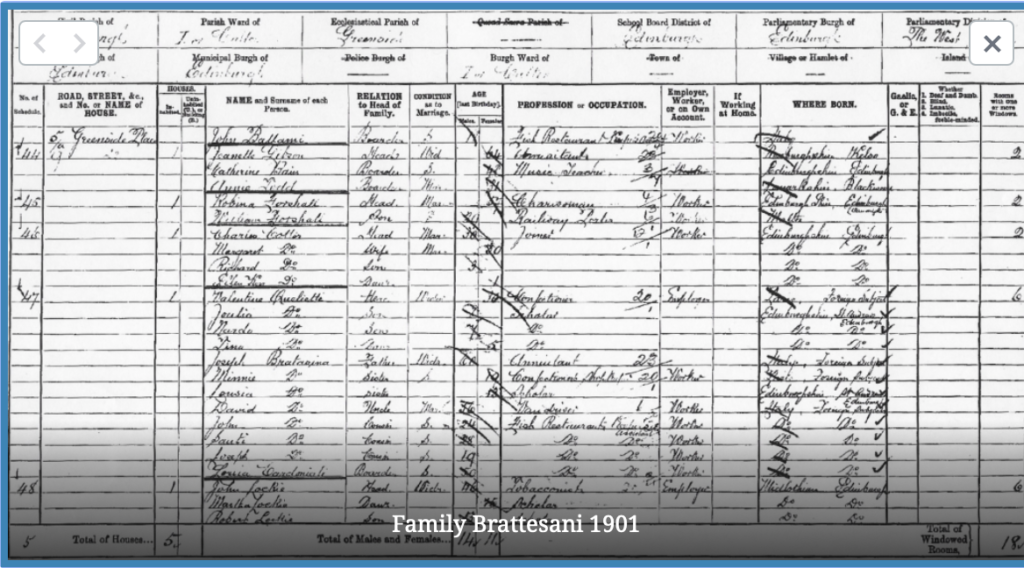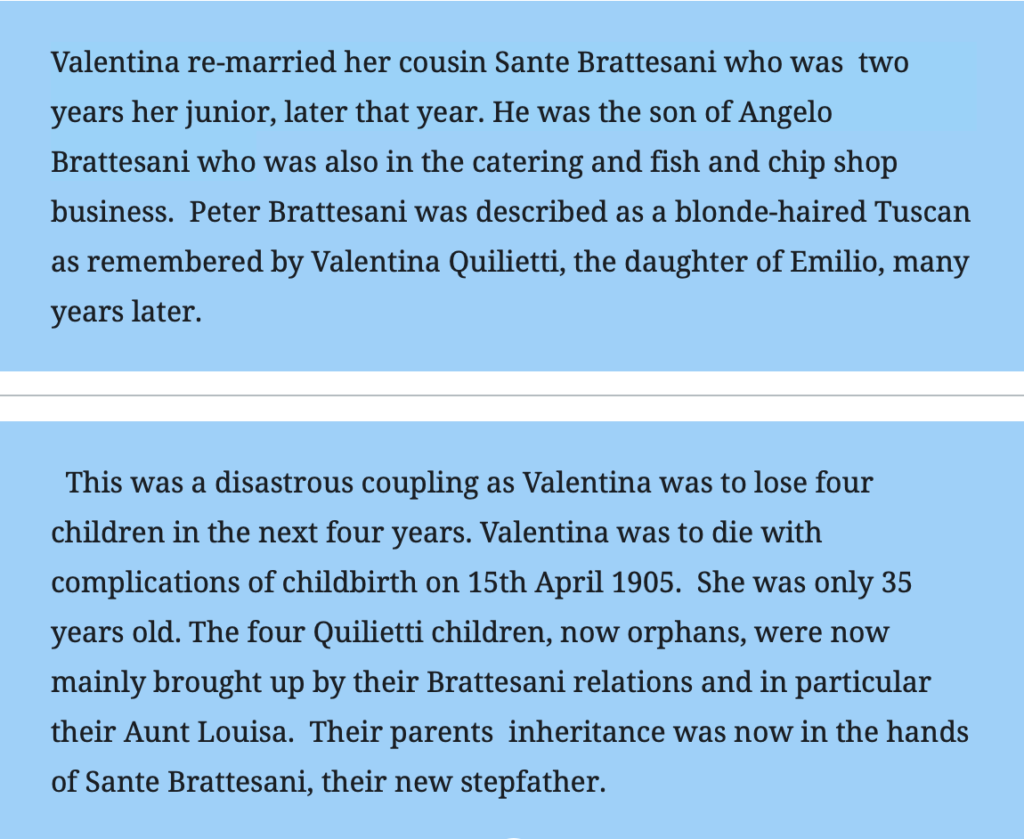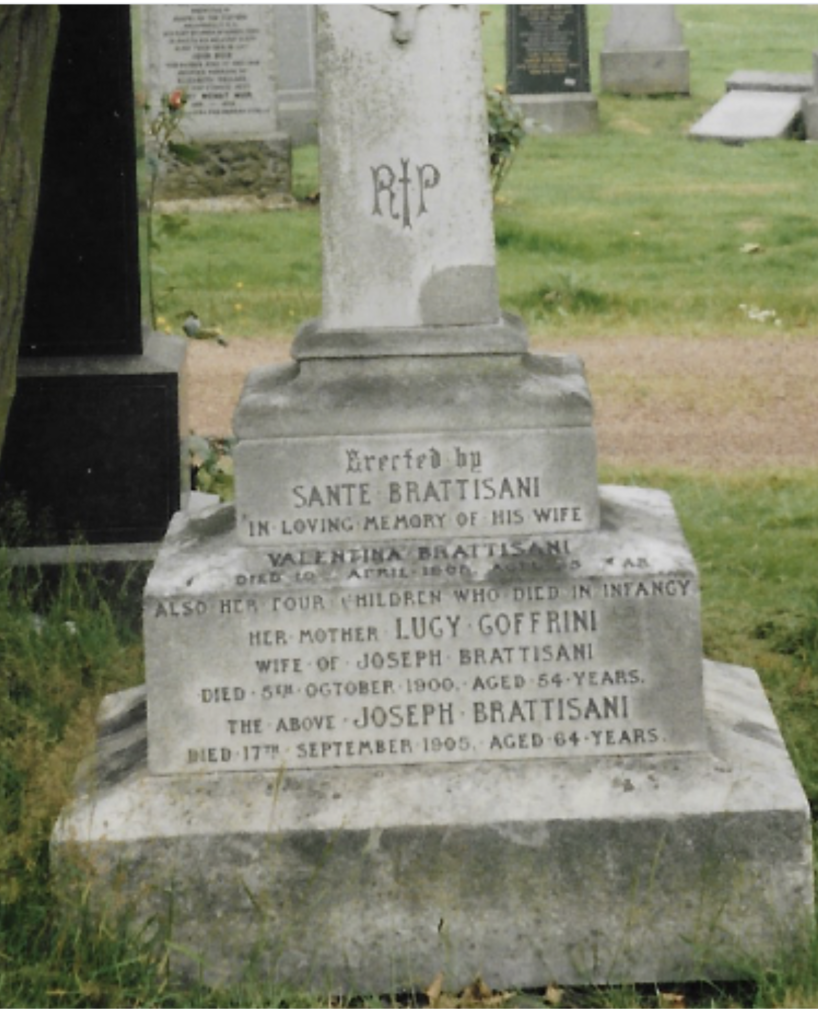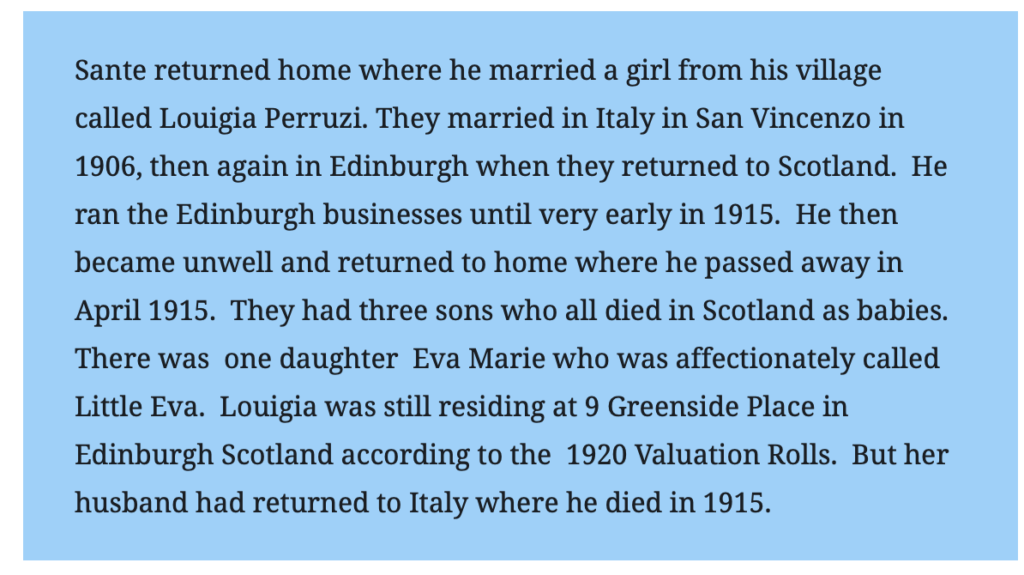EMILIO a wee story
As I have researched our family history I have found out more about our great grandad Emilio Quilietti through research here in Edinburgh. My whole thoughts on our family history have changed with my findings. It has come to light only recently just how successful Emilio’s businesses were and how it was he who paved the way here in Scotland for a better way of life for his family.
Emilio was born in the village of Castelvecchio, Barga, Lucca, in Tuscany, on 15th August 1868. He was baptised in the Church of St. Nicoli’ there. The village was later re-named Castelvecchio Pascoli in honour of the famous Italian Poet who made the village his home. Emilio died Edinburgh, Scotland 9th January 1898 age 29 years. He is the forefather of all the Quilietti descendants in the world today.
His brother Augusto’s only surviving daughter Angelina Quilietti married Gaetano Arpino. So Augusto’s descendants all have the Arpino name.
Giuseppe who emigrated to Rhode Island had no children
Adolfo who emigrated to Rhode Island had no children
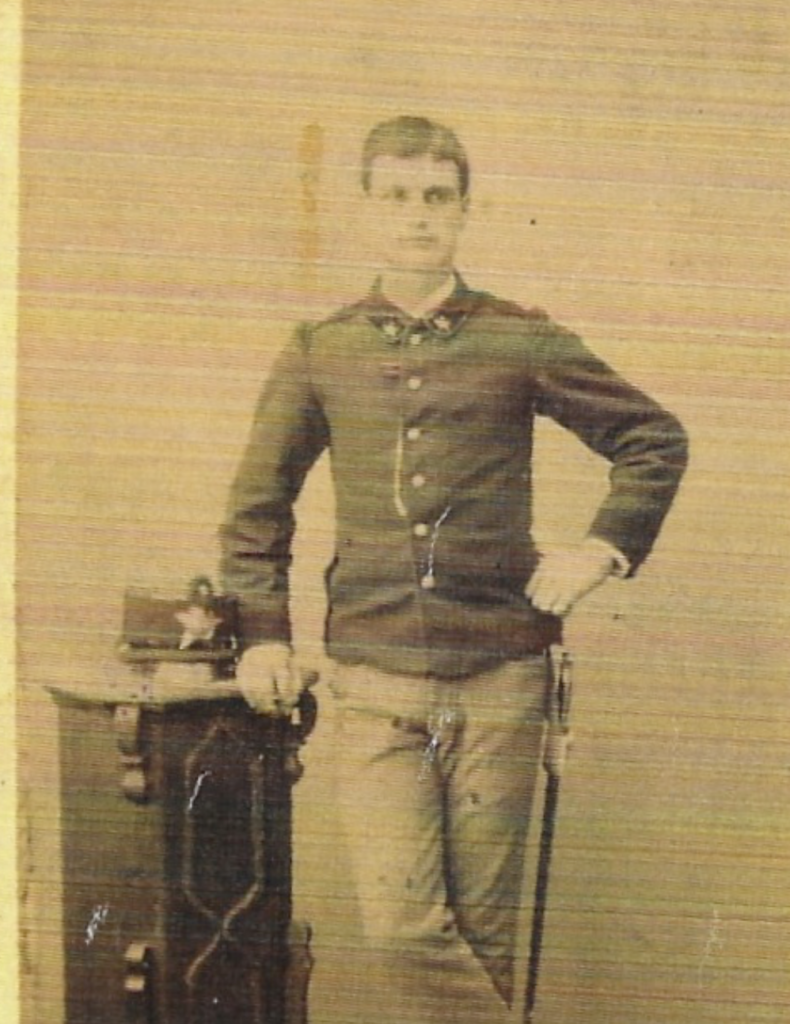
Doing his National Service
We do know however that Emilio was in the Italian Army for a short time as is shown in this photograph and we date the photograph to 1883. The unification of Italy had combined in the oppressive Mazzarasystem of sharecropping in the regions. This system favoured the landowners and the people who worked the land were left almost starving. By the 1880s there was a mass exodus of Barghigiani, the citizens of Barga and her surrounding villages. These villages and Barga herself were left desolate and almost uninhabited.
Many of The Barghigiani favoured Scotland as their new home. Scotland at this time between 1880 and 1920 had no travel or work restrictions and became the main destination of choice for emigrants, The Italians from Barga mainly settled in the central belt, some favouring Edinburgh and Inverness and others the West Coast, Ayr and Glasgow. This new workforce plied their original trades of stucco and marble, a trade for which they are still craftsmen today but they also diversified into the new Italian trades of ice cream, confectioners and fish and chip fryers. To begin with the ice cream was sold on the streets from ice cream carts and later as their profits grew they sold their wares from cafe’s. It was strange how their professions had diversified from farmer backgrounds to the catering trades but it was surely their love for food which drove them towards this new profession.
Some other Italian immigrants continued to work with the stucco and many of these people originated from the Frosinone region of Italy, from Picinisco. Many more carved out new careers in the arts and became accomplished barbers and hairdressers. From the northern regions of Como and Lugiria came the glassblowers and clock makers, but all were united in escaping the crippling economy and disastrous agricultural conditions of their homeland. It was to Edinburgh that we find Emilio and his brother Augusto arriving in the year 1888.
Emilio and Augusto worked with their uncle in the trade of marble and stucco and we know that they worked the central belt of Scotland plying their trade. The language and customs of these new Italian immigrants were totally alien to the Scots, which made close contact with either communities impossible in these early years.
Most of the Italian immigrants did not speak English or Scots and most of them had only rudimentary education. This would contribute to the community sticking together and would have made their lives more harmonious with not having to speak the language of their new country. And of course as their communities established themselves the phenomenon of ‘chain migration’ started to appear as they sent for their families and friends to join them and to work in the businesses they eventually had set up. These friends and families were of course easier to work with, having the same cultural background and language. These families would be trustworthy as they would not want to be sent back for stealing from their benefactors.
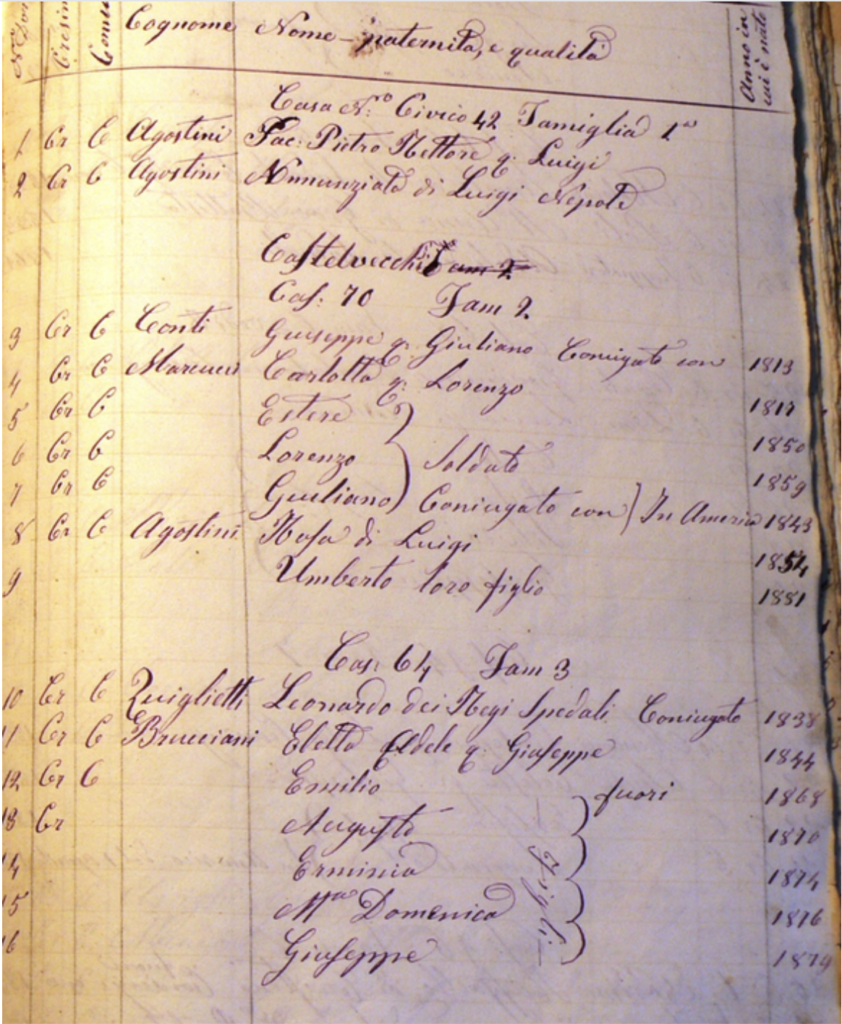
census Castelvecchio 1882
The family of course would be members of their local Churches and the Quilietti family were no exception. The two churches which saw the marriages, baptisms and burials of the earliest of our ancestors were St. Mary’s at Broughton Street which is now St. Mary’s R.C. Cathedral and the Church of the Sacred Heart at Lauriston in Edinburgh. St. Mary’s would have been a meeting point for Emilio Quilietti and Valentina Brattisani as the Brattisani family were living in Leith Walk. This Church was certainly the main Italian Catholic Community meeting point in the city at that time.
There has been a church here since 1814. At that time there were few Catholics living in Edinburgh. The original church was a simple rectangular building with a low roof and no side aisles. All that remains of that church is the neo-Gothic facade designed by the architect James Gillespie Graham. In 1878 the Catholic Hierarcy was restored to Scotland and in 1886 St. Mary’s was named as the Metropolitan Cathedran of the new Archdoicese of St. Andrews and Edinburgh. Following the fire in 1892 [which was the year Emilio married here] it was decided to enlarge the church and this led to the addition of the present sanctuary and side aisles. Of course over the next forty years with the mass immigration of Italians and Irish the catholic population of Edinburgh grew rapidly. The couple married here on 29th April 1892.
After their marriage the couple moved to an address at Cranston Street, just off the Royal Mile, where they rented a flat. It was also here that their eldest child was born, Julio Emilio Quilietti on 17th December 1892. By the year 1895 my recent research has thrown up so much information about our ancestors. The 1895 Valuation Rolls tell us this
Emilio had a cafe’ chip shop just at the foot of Calton Hill at the start of the street called Low Calton and next to the ‘fighting five’ stairs, which they appropriately called the Quilietti Five Step Saloon. This would be his first shop but many more were to follow. This would also be the shop remembered many years later by men who fought in Gallopoli in the Great War. the paragraph in the book about Greenside and Leith Walk reads as follows:-
Santos Brattesani, or Sante, was Valentina’s first-cousin. She married him after the early death of Emilio in 1898. It looks like he was managing the shop for a while, perhaps before Emilio died, perhaps afterwards but before the cousins married. The Five Steps Saloon bearing the Quilietti name was surely a well established Edinburgh establishment during the late 1890s and early 1900s. The soldiers remembering with great fondness the taste of a great Fish Supper.
Emilio and Valentina’s last home was at No. 24a Greenside Place was right next door to what is now the Playhouse Theatre and down the hill a bit from the Cathedral. The flat was the ground flat with shop at front. There were tenement flats above. Conditions in these tenements were not wonderful and many had no sanitation. But the rooms were large and would have been welcomed by the growing family. Joining The next year Eletta Filomena Quilietti was born but she was to die in infancy. Joseph Angelo, my own grandfather, was also born here on 6th January 1898 . Their last child Amelia was born on April 25th 1899, four months after Emilio’s death. By the age of 29 at the time of his very early death of Typhoid Fever Emilio had no less than 8 premises in Edinburgh, Leith Walk and Greenside. Edinburgh.
EMILIO died of typhoid fever on 8th January 1898. He was buried at Easter Road Cemetery in Edinburgh. Interred with Emilio are Julia Brattesani, infant sister of Valentina, Clare Antonia, daughter of friends of Augusto Quilietti, baby Emilio Donati, and two months after Emilio, his daughter Eletta Quilietti. The plot itself is now full. The Stone has now gone covered by grass
Edinburgh itself was now experiencing vast improvements in the City with electricity lighting up her streets. It’s chief industry was the quenching of thirst by two extremes, alcohol and ice! There were twenty-two pubs in the triangle between Leith Street and York Place while the supper-rooms were pale by comparison but thriving and modern. Some of the ice cream parlours were beautifully fitted out with mahogany and crystal, while the metal work shines like that of a man of war. Our own heritage lies here with Emilio. He is a part of our Edinburgh history, a pioneer, and be thanks to him that we are all here today. The extremities of our cold damp climate took their toll on this young Italian and it was during an especially cold winter that Typhoid Fever, in its twelfth day, killed him. Life after he died was not too good for Valentina Brattisani Quilietti.
Edinburgh itself was now experiencing vast improvements in the City with electricity lighting up her streets. It’s chief industry was the quenching of thirst by two extremes, alcohol and ice! There were twenty-two pubs in the triangle between Leith Street and York Place while the supper-rooms were pale by comparison but thriving and modern. Some of the ice cream parlours were beautifully fitted out with mahogany and crystal, while the metal work shines like that of a man of war. Our own heritage lies here with Emilio. He is a part of our Edinburgh history, a pioneer, and be thanks to him that we are all here today. The extremities of our cold damp climate took their toll on this young Italian and it was during an especially cold winter that Typhoid Fever, in its twelfth day, killed him. Life after he died was not too good for Valentina Brattisani Quilietti.
Valentina, after the death of Emilio carried on in the running of his shops. We know that in the year 1901 she had moved out of 24 Greenside Place and moved further up the hill to No. 9 where her ever growing extended Brattesani family were all living.
